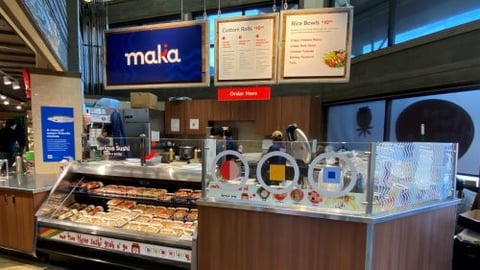How Fresh Is Your Fish?
How can food retailers ensure that they’re offering the freshest product possible? San Jose, Calif.-based Assurant Innovations provides “handheld devices that measure accurate fish freshness, fish fat and meat fat content so that grocery owners can make decisions on the spot,” notes CEO Takeo Kimura. “These devices are portable, rugged and non-destructive, meaning the fish or the meat you measure can be used again – it does no harm to the fish or the meat being measured.”
Adds Kimura: “By using these devices, the grocery stores can measure a batch of fish at random times to make sure they are receiving quality fish from each supplier on the spot. They can then rank each supplier and provide feedback for improvement. We know of many grocery stores using these meters as a ‘go’ or ‘no go’ spot check. These grocery stores have an agreement with their supplier to say if the fish does not meet the agreed-upon fish freshness scale/grading level, they will not purchase it or will discount a certain amount. This is a great way to keep consistency of the fish quality level for the grocery store.”
[Read more: "Grocers Share Their Successful Seafood Strategies"]
He also points out that armed with such knowledge, retailers can price an item in line with how fresh it is. “As the fish are displayed in the grocery store or the storefront, they begin to degrade over time,” says Kimura. “However, depending on how the fish is being kept (refrigerated, on ice or in an enclosed display), the rate of decay differs. The grocery store can measure every day on each fish to determine the fish freshness and change the price accordingly. They can price the ‘fresher’ fish more expensive when compared to others. This is a great way to monitor the fish freshness and to change the price accordingly.”
Such a device also enables a retailer to differentiate itself from the competition. “How does a small local boutique fish grocery store/market compete with larger stores? One way is to be transparent and show the customers fish freshness results,” observes Kimura. “We have a growing number of small grocery stores that have started to display the fish freshness score. Or they will measure the fish right before the customer decides to buy. This shows to the customer that the grocery store is serious about fish freshness and they care about the customer.”
Yet another, somewhat controversial, use is to discover fake or injected seafood products. “There are incidents with scallop, shrimp and other seafood products where suppliers inject with some sort of artificial liquid substance to make it look plumper and to make it heavier, thus hoping to increase the price being paid, since most grocery stores pay by weight,” explains Kimura. “These devices are used to weed out such products. As an example, if you measure 20 known ‘pure’ scallops without any injection, and then measure 20 known ‘injected’ or ‘suspicious’ scallops, you can clearly see the results are different by looking at the raw impedance measurement. If there is a consistent trend from one supplier to another, then the grocery store can decide what to do.”
Despite the many functions of Assurant’s devices, they do have some limitations. For example, they don’t work on frozen products, only on thawed items, and depending on the device, only a select few fish species are supported out of the box. “For example, the Fish Analyzer currently supports 18 fish species,” says Kimura. “If you want to measure any other fish that is not supported, you’ll need to do your own calibration, look at the raw impedance results and determine fish freshness yourself.”






